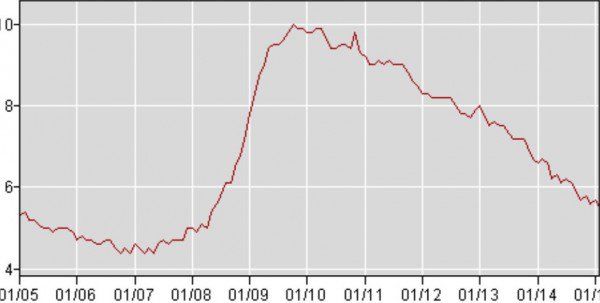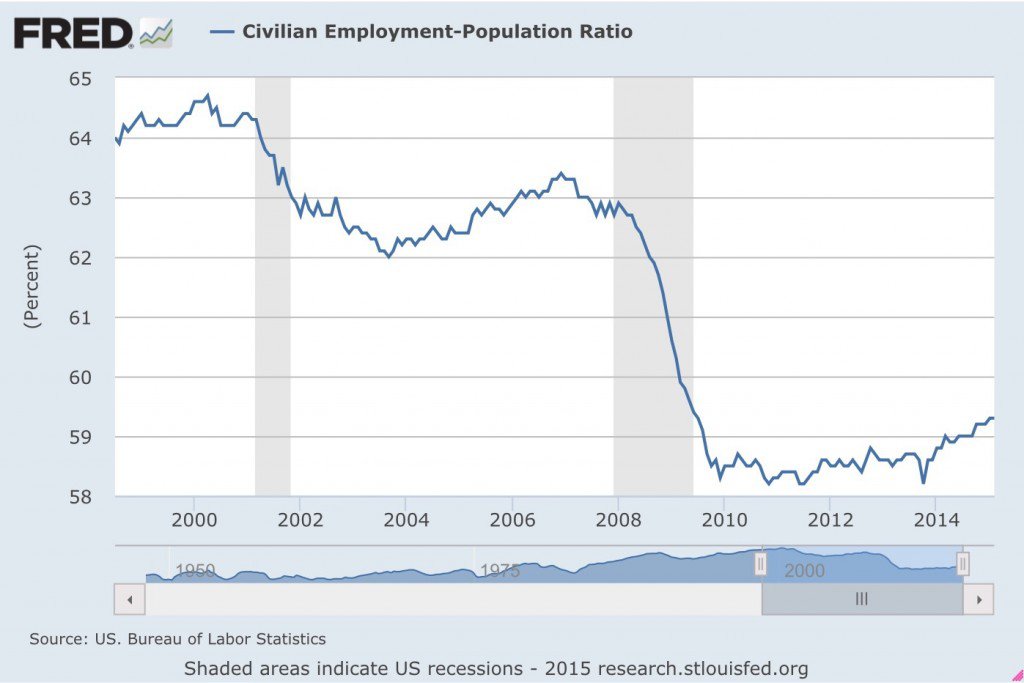by Frank Camp • IJReview
According to a new study by Pew Charitable Trusts, using data from 2000-2013, the middle class population in America has “shrunk” in all 50 states:
The states that have suffered the most recently are:
Wisconsin:
2000: 54.6% middle-class
2013: 48.9% middle-class
Total loss: 5.7%
Ohio:
2000: 50.9% middle-class
2013: 45.7%% middle-class
Total loss: 5.2%
North Dakota:
2000: 52.6% middle-class
2013: 47.5% middle-class
Total loss: 5.1%
States that have fared the best recently are:
Wyoming:
2000: 51.5% middle-class
2013: 51.2% middle-class
Total loss: 0.3%
Idaho:
2000: 52.7% middle-class
2013: 51.9% middle-class
Total loss: 0.8%
Hawaii:
2000: 49.9% middle-class
2013: 48.6% middle-class
Total loss: 1.3%
The “shrinking” middle class can possibly be attributed to a decrease in employment. Despite the national unemployment rate dropping to 5.7% in January 2015, the Civilian Employment Population Ratio (CEPR) has reported an all-time low number of eligible Americans in the workforce:
The Federal Reserve Bank of St. Louis reported in January of 2005 the CEPR stood at 62.4%. Ten years later, it has dropped to 59.3%. However, unemployment rates in January 2005 were reported to be 5.3% and in January of 2015 it is a reported 5.7%. These numbers do not reflect those who have left the workforce entirely.
According to The Huffington Post, many jobs gained after the recession have been in a lower income bracket. Even if middle class families have found work, it’s often been with jobs that pay less.
Upon further inspection of the recent numbers concerning job recovery, they seem to indicate a discrepancy between the purported “boom” in the economy and a “disappearing” middle class.



